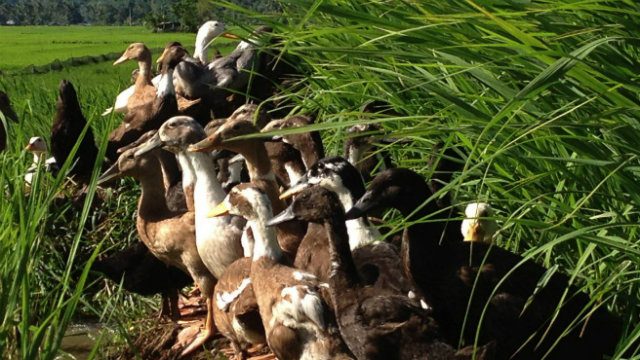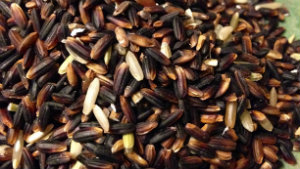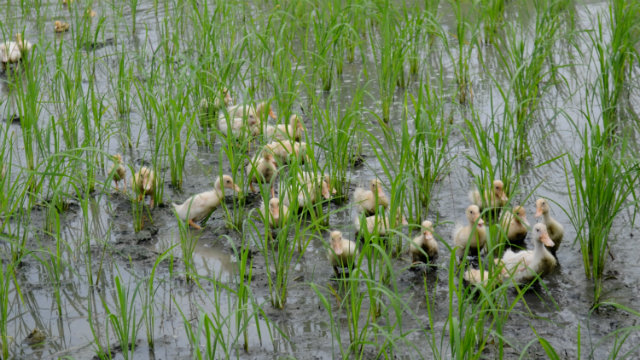SUMMARY
This is AI generated summarization, which may have errors. For context, always refer to the full article.

MANILA, Philippines — Ducks. Have you ever given them some thought?
In the Philippines, agriculture is a crucial sector for poverty reduction. 70% of poor Filipinos are in the rural areas where agriculture – often subsistence farming and fishing – is the primary and often only source of income. Thus, creating a sustainable and competitive agricultural industry is a key focus of the Philippine Development Plan, as this will bring inclusive growth to a large segment of the population.
But how can we help create a robust agricultural industry that will ensure that the current and next generation of Filipinos, especially the poor, will have plentiful, nutritious and affordable food?
One of the local solutions is ducks. (WATCH: Ducks in action)
The integrated rice-duck farming system (IRDFS) is about growing rice and ducks together in an irrigated paddy field. The paddling movement of the ducks stimulates the rice plants to produce more grains, while the duck manure fertilizes the soil and eventually eliminates the need for any form of fertilizer.
The ducks also eat harmful insects and weeds, including the dreaded golden snail (kuhol), which is their favorite snack.
Jose Apollo Pacamalan is the leading expert in IRDFS in the Philippines, having brought home the technology from Japan – thanks to Japanese organic farmer and social entrepreneur Dr Takao Furuno in 1997. (READ: PH road to rice self-sufficiency)
For the past 16 years, Pacamalan has been convincing farmers to trade in their expensive and harmful chemical sprayers for week-old ducklings that will work in their rice fields. Pacamalan represents the Philippines in the International Rice-Duck Farming Network which includes Japan, South Korea, Bangladesh, Vietnam, China, and Bangladesh.
Better income, environment, health
 In the last 5 years, based on the experience of more than 1,000 rice-duck farmers in the Philippines, most of whom are in Mindanao, IRDFS has increased rice productivity up to 9 tons per hectare.
In the last 5 years, based on the experience of more than 1,000 rice-duck farmers in the Philippines, most of whom are in Mindanao, IRDFS has increased rice productivity up to 9 tons per hectare.
The average is only 4.2 tons per hectare when using conventional rice farming technology.
IRDFS also reduces the cost of production by 30%. It is the only organic rice farming technology that can successfully be adopted on a large scale.
Farmers gain extra income from the sale of duck meat and duck eggs, whether raw or processed into salted egg or balut, a Filipino delicacy that is in very high demand.
What is also exciting is that this farming system has inspired the growth of social enterprises along an integrated rice and duck industry value chain such as rice-duck farms, duck breeder farms, hatcheries, duck meat and egg processing and retail.
All of these contribute to rural economic growth that is sustainable and inclusive.
As much as 21% of greenhouse gas emissions worldwide consist of methane gas that is released primarily by flooded rice fields. This is because flooding cuts off the oxygen supply to the soil and accelerates the decomposition of organic matter, releasing methane into the atmosphere. (READ: How climate change threatens food security)
Studies in China show that ducks in the rice paddies effectively reduce the emission of the greenhouse gas methane, ultimately contributing to the alleviation of global warming. And because IRDFS eliminates the need for chemical fertilizers, synthetic pesticides, and herbicides, the physical and chemical properties of the soil are improved over time.
In the Philippines, ducks in the rice fields also help address schistosomiasis, a chronic public health disease affecting farmers, local folks and freshwater fisherfolk and their families, and is endemic in select parts of the country.
The ducks eat the schisto-carrying snails, helping decrease its population, and thus reducing infection and re-infection of the disease to humans.
#RiceDuckMovement

After just 3 months of eating organic, unpolished rice and iron- and iodine-rich duck meat, there is improved nutrition — weight gain and healthier skin — among 897 children aged 1-10 years old.
These malnourished children participated in a feeding program in the Municipalities of Trento and Esperanza in the Province of Agusan del Sur last year. They were also given a porridge called “arrozcalducks.”
705 women were organized in local feeding teams, together with the barangay nurses and barangay health workers. They were taught to prepare the arrozcalducks for their children.
Aside from food preparation, the women were also provided inputs on basic nutrition, breastfeeding, environmental sanitation, and family planning through mother’s classes.
Based on reports from school teachers and nurses, the average school attendance of the children in all the participating barangays improved significantly from 57% to 72% in Esperanza, and from 64% to 73% in Trento.
Integrated rice-duck farming is an innovative, out-of-the-box, local solution that has already been proven effective and needs to be shared with more Filipino farmers and policymakers.
Help us harness the enduring spirit of the Filipino poor – the small-scale farmers who are at the heart of efforts to create a food-secure world – by working with them, raising their incomes and making them part of the solution.
There a number of ways you can help:
- Share this information with your family, friends, networks, and local politicians.
- Visit and like the #RiceDuckMovement Facebook page and help us share the good news on IRDFS.
- If you would like to make a donation through direct bank deposit, please email riceduckph@gmail.com. We can then send you the necessary account details. – Rappler.com
Sef Carandang is a development worker passionate about sustainable agriculture (especially if it involves rice and ducks!), women economic empowerment, rural development, and youth empowerment.
How else can we fight hunger? Report what your LGU is doing, recommend NGOs, or suggest creative solutions like the #RiceDuckMovement. Send your stories and ideas to move.ph@rappler.com. Be part of the #HungerProject.
Add a comment
How does this make you feel?
There are no comments yet. Add your comment to start the conversation.